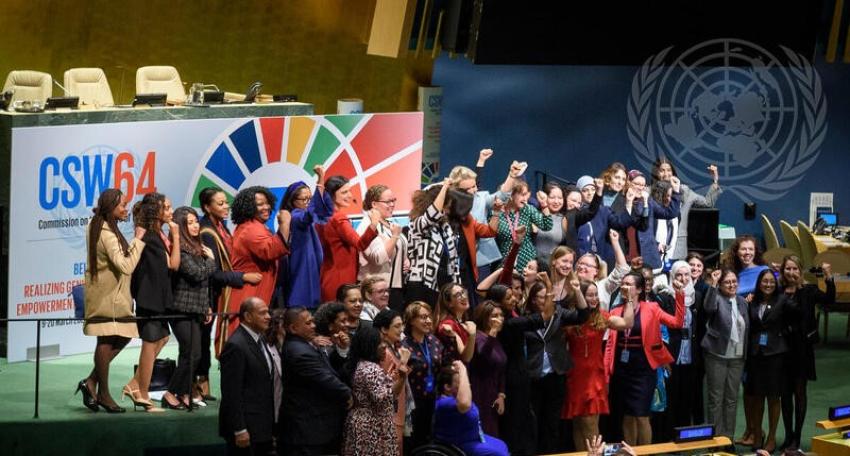Washington, DC – 5 April 2024 – Izumi Nakamitsu, United Nations High Representative for Disarmament Affairs was in Washington, DC.
What are the prospects for disarmament in an ever-changing global landscape?
That was the topic of a recent roundtable discussion in Washington, DC, with leading US experts on disarmament and the United Nations High Representative for Disarmament Affairs, Izumi Nakamitsu.
The dialogue was timely, as today’s global disarmament landscape is fraught with intensifying challenges and risks.
With conflicts across the world increasingly protracted and harder to resolve, global military spending has hit an all-time high of 2.24 trillion US dollars in 2022. The global disarmament and non-proliferation regime, as well as arms control diplomacy, which have contributed to the world’s safety for decades, are threatened by a dangerous era of geopolitical tension.
Provocative rhetoric is on the rise, while threats of nuclear weapons use as tools of coercion have emerged as a worrying new reality. At the same time, the advancement of and competition on new and emerging technologies has the potential to impact peace and security in ways we cannot predict today, sparking conversations on their responsible use in the military domain.
Against this backdrop, Izumi Nakamitsu spoke to the experts about an ambitious set of solutions that recognizes and addresses many of these concerns laid out by the UN Secretary-General in his ambitious New Agenda for Peace. That agenda outlines a clear vision for multilateral efforts for peace and security, based on international law, for a world in transition. The New Agenda for Peace makes it clear that disarmament is a vital component of that vision, and a key aspect of international peace and security.
Amongst others, the Agenda calls for States to recommit urgently to the pursuit of a world free of nuclear weapons, and to develop a “human-centered version of disarmament” through curbing military expenditures and protecting civilians, ensuring effective control of conventional weapons and regulating new technologies.

The UN Summit for the Future, taking place in September 2024, will be an opportunity to advance work toward adoption of such a vision, she said. Ms. Nakamitsu emphasized that advancing disarmament, arms control and non-proliferation is central to the United Nations’ past, present, and future responsibilities and detailed the importance of past and current agreements, with particular focus on the Treaty on the Non-Proliferation of Nuclear Weapons (NPT).
Following her briefing, the High Representative and the representatives of the Brookings Institution, the Center for Arms Control and Nonproliferation, the Stimson Center, the Carnegie Endowment for International Peace, and others together explored how multilateral diplomacy on disarmament issues could be furthered in fraught geopolitical times, contemplated the current and potential opportunities and risks associated with Artificial Intelligence, which, when applied to nuclear weapons, could add another layer of risk to an already alarming level of danger, discussed the trends of rising military expenditures and the proliferation of illicit small arms and light weapons and their negative impact on sustainable development.
The work of the High Representative for Disarmament Affairs, including discussions like those at the United Nations Information Center in Washington recently, is ongoing with various crucial meetings on the horizon. First up is the Review Conference of the United Nations Programme of Action on small arms and light weapons in New York, where States will have the opportunity to take stock of progress made in combatting the illicit trade in and proliferation of these weapons, and identify solutions for emerging issues, such as 3-D printed weapons. Also in the Summer, countries will meet for the next preparatory committee for the review of the Treaty on the Non-Proliferation of Nuclear Weapons. Preparatory meetings are meant to lay the groundwork for a successful milestone conference in 2026 when States have the opportunity to make tangible progress, including in the area of nuclear disarmament.




